I have a general question that I couldn't find a satisfactory answer for. I'm building a set of visualization functions, and I want to let the user have flexibility when using them. For example, I'd like to keep it optional whether errorbars should be included in a bar plot, or whether labels in geom_text() will be in percent or decimal.
If we think of a typical construction of code in ggplot(), we have elements separated by +. So if I want to allow optional construction, I'd likely need to "turn on" or "turn of" either entire geoms (e.g., completely ignore geom_errorbar() if user doesn't want errorbars in plot), or otherwise tweak within geoms (e.g., changing the only label argument within geom_text() to convert labels to percent or keep in decimals).
I hope my question doesn't invite too opinion-based answers, but rather have people lay out the standard/typical way of coding optional arguments when wrapping ggplot() with customized functions.
Example
I came up with a solution that I dislike. I think it makes code long and hard to read. I also can't say much on whether it's efficient or not computationally-wise.
Say that I want to build a custom function for a bar chart. There are several things that I wish them to be "tweakable":
- Whether bars should be ordered or not (see
reorder_colsargument) - Whether to provide user's own set of x axis labels (see
x_axis_labelsargument) - Whether to add errorbars (
add_errorbar) - Whether to show bar labels in percent (
show_in_percents)
Then I assign each optional code into a variable, and use a conditional to determine which piece of code should be included, according to bar_chart()'s relevant argument.
library(tidyverse)
library(broom)
#> Warning: package 'broom' was built under R version 4.0.3
bar_chart <- function(data, x_var, y_value, reorder_cols = TRUE, x_axis_labels = NULL, add_errorbar = NULL) {
reordered <- geom_bar(stat = "identity", width = 0.8, aes(x = reorder({{ x_var }}, -{{ y_value }} ), y = {{ y_value }}, fill = as_factor({{ x_var }})))
not_reordered <- geom_bar(stat = "identity", width = 0.8, aes(x = {{ x_var }}, y = {{ y_value }}, fill = as_factor({{ x_var }})))
with_x_axis_labels <- scale_x_discrete(labels = setNames(str_wrap(x_axis_labels, 10), names(x_axis_labels)), expand = c(0, 0))
without_x_axis_labels <- scale_x_discrete(expand = c(0, 0))
if (reorder_cols == TRUE) {
my_geom_bar <- reordered
} else {
my_geom_bar <- not_reordered
}
if (is.null(x_axis_labels)) {
my_scale_x_discrete <- without_x_axis_labels
} else {
my_scale_x_discrete <- with_x_axis_labels
}
if (add_errorbar == TRUE) {
my_errorbar <- geom_errorbar(aes(x = {{ x_var }}, y = {{ y_value }}, ymin = errorbar_lwr, ymax = errorbar_upr), width = 0.1, size = 0.75)
} else {
my_errorbar <- NULL
}
ggplot(data) +
my_geom_bar +
my_errorbar +
my_scale_x_discrete
}
labels_for_barplot <-
c("bar_1", "bar_2", "bar_3")
mtcars %>%
lm(mpg ~ factor(carb), data = .) %>%
broom::tidy() %>%
mutate(errorbar_lwr = estimate - std.error,
errorbar_upr = estimate + std.error) %>%
bar_chart(data = ., x_var = term, y_value = estimate, reorder_cols = TRUE, add_errorbar = TRUE, x_axis_labels = labels_for_barplot)

Created on 2021-01-17 by the reprex package (v0.3.0)
All in all, I gave this example to ask whether there are alternative, more concise ways of achieving optional arguments in a wrapper for ggplot.
EDIT
As @Tjebo noted, my code was buggy and simply won't run. I updated it, also removing the part about geom_text() as it was too confusing.

